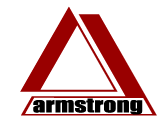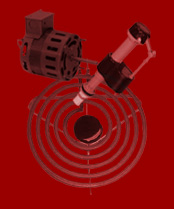
The first group-produced catalog of the appliance
service industry, the Armstrong Value Parts catalog, had a stormy 1971
beginning.
Sylvia Lurie related the events in a history of the National Appliance
Parts Suppliers Association (NAPSA). “MEETING THE CHALLENGE:
NAPSA 1966-1981” “The problem of the catalog had been building
up for some years. Many NAPSA members wanted an industry catalog to
use in their marketing efforts and had been trying ever since the association
was formed to put one together under this association’s auspices.”
By 1970, NAPSA had established guidelines for manufacturers to use
in preparing parts literature and had purchased a stock of special
loose-leaf catalog binders. Many felt this effort did not fully meet
the members’ marketing needs.
Other attempts to put together a better catalog floundered because
of disagreements over which parts should be included and because it
was impossible for an association produced catalog to include the price
lists members needed.
Eventually, in 1971, a group of NAPSA member companies decided to “print
the son-of-a-bitch ourselves” and formed a private company (w.d.
armstrong corporation) for that purpose. FTC regulations required them
to enroll participants whose marketing territories made them non-competitive
to each other so that the catalog could include prices.
Several NAPSA members who were not invited to join w.d. armstrong
learned of the venture and reacted in outrage at the San Antonio meeting
in 1971. They led a dramatic attack on “the conspiracy coming
out of the Southeast” and demanded that all armstrong group members
be expelled from NAPSA.
NAPSA and armstrong both survived the difficult birthing process and
armstrong has grown and prospered.
The first armstrong catalog hit the repairman’s mailbox in the
fall of 1972 with 288 pages, 5-1/2” X 8-1/2”, filled with
parts, tools and cross reference charts. Each item was priced on the
page at NET WHOLESALE from the manufacturer suggested lists or by consensus
of the parts distributors who bore the cost of publishing, printing
and mailing.
Members of w.d. armstrong had agreed on a basic policy format:
1. Distribution of catalog through exclusive
territories.
2. Mailing lists were maintained by armstrong,
with all catalogs and monthly fliers mailed directly from the printer
to dealers and repair agencies.
3. Distributor members were to create individual
copy for monthly fliers to be printed and mailed by armstrong.
4. Other distributors could be added to the
group in uncommitted territories only.
The armstrong distributors went about their catalog business with
all the energy and fervor of a labor of love. The book was on its way
to becoming the leading reference manual of the appliance parts industry.
Armstrong produced two catalog printings every year with each issue
featuring new items and current pricing. The creators took great pride
in producing more and thicker catalogs with each printing. All were
mailed on the demanding April/October schedule.
Industry changes in the 80’s brought challenges to some of the
armstrong members when they were approached by certain appliance manufacturers
with an opportunity to become distributors of “Original Equipment
Manufacturer” (OEM) parts instead of the non-OEM products featured
in the armstrong catalog. A new evolution began as the newly appointed
OEM distributors petitioned the group to make changes in the featured
products.
The first change was the addition of optional front catalog sections
of copy created on an individual basis. As copy was produced featuring
OEM sole source items, the substitution of OEM alternatives for some
of the non-OEM parts increased and the “OEM Catalog” was
born.
Over the years a few changes have occurred in the way territories
are established and in 1996 the decision was made to discontinue the
fall issue. Today the catalogs are printed once a year in April.
For several years, different catalogs were printed for the several
types of parts distributors in the market; there were “regular” non-OEM
catalogs, OEM catalogs and several styles of “hybrid” catalogs.
The industry continued the drift away from non-OEM parts and in 2002
armstrong catalog production was consolidated into one catalog for
all.
Also in 2002, the catalog page size was changed from the old 5-1/2” X
8-1/2” to 7” X 9”. The 2005 catalog carries 768 pages.
Each parts supplier who provides catalogs to the trade justifies the
expense in the hope of reducing research time required to exactly identify
any particular part. Matching a picture or number stamped on an old
part almost always gives the best chance of quick and correct identification.
Model numbers and educated guesses are often OK but nothing has a worse
effect on the income than a broken-down appliance waiting for the wrong
part. Another consideration is that repair people who study catalogs
can often find or negotiate better prices on parts. Though there are
no guarantees, prices in current catalogs can usually be relied upon
as a guide for estimation repair jobs.
If you are a tech in a territory not served by an armstrong distributor
(see WAREHOUSE LOCATIONS) you may order by mail and enclose $10 for
each catalog copy.
|





